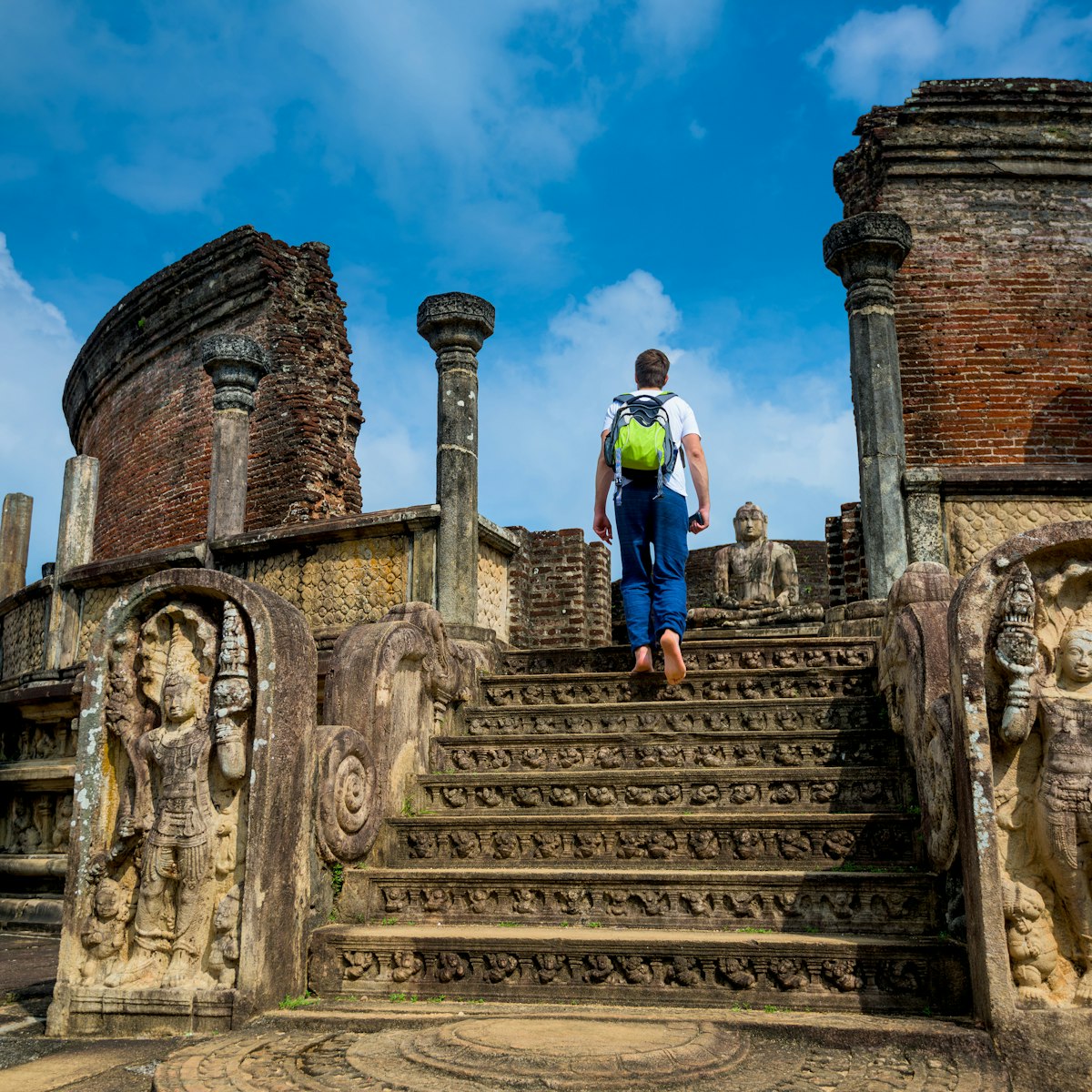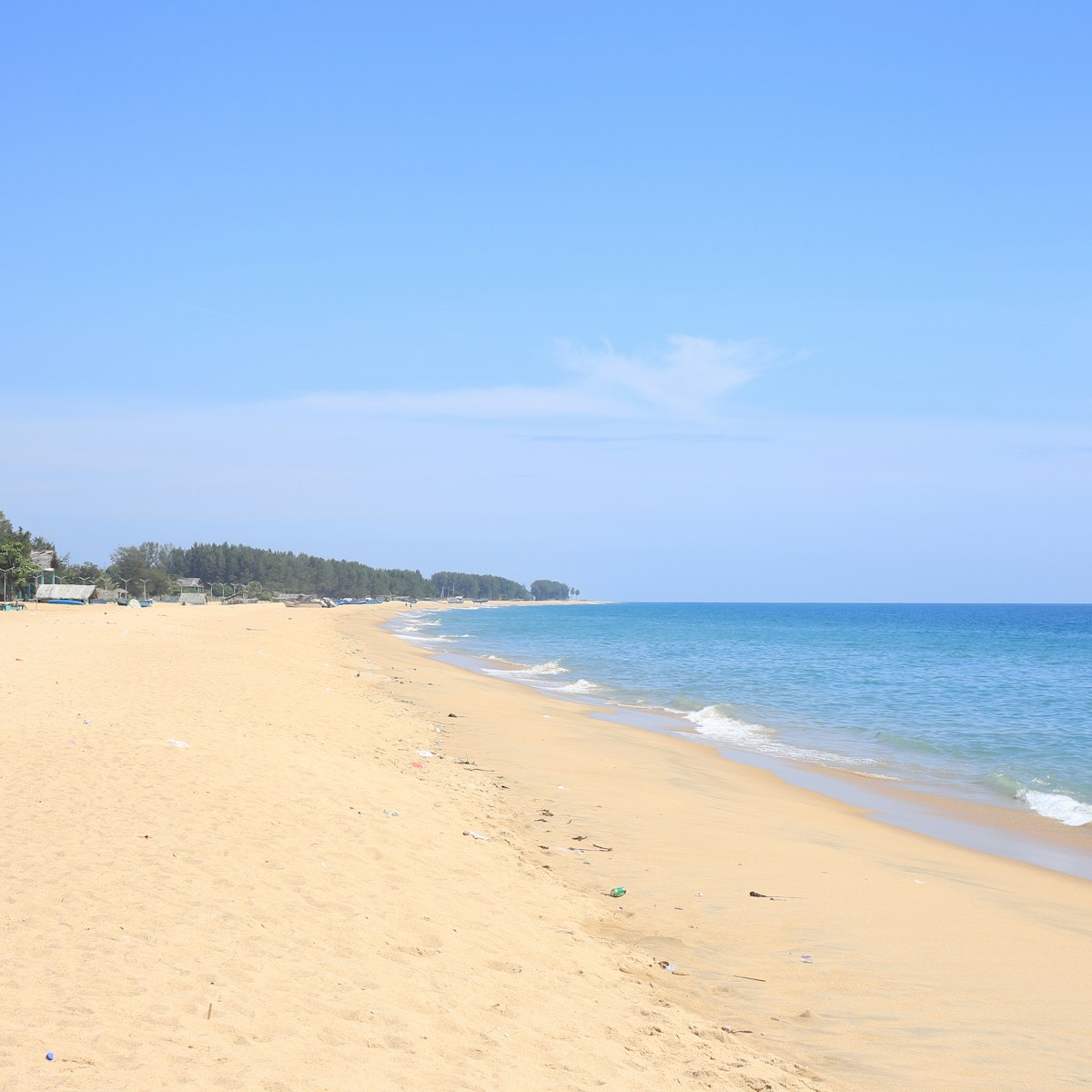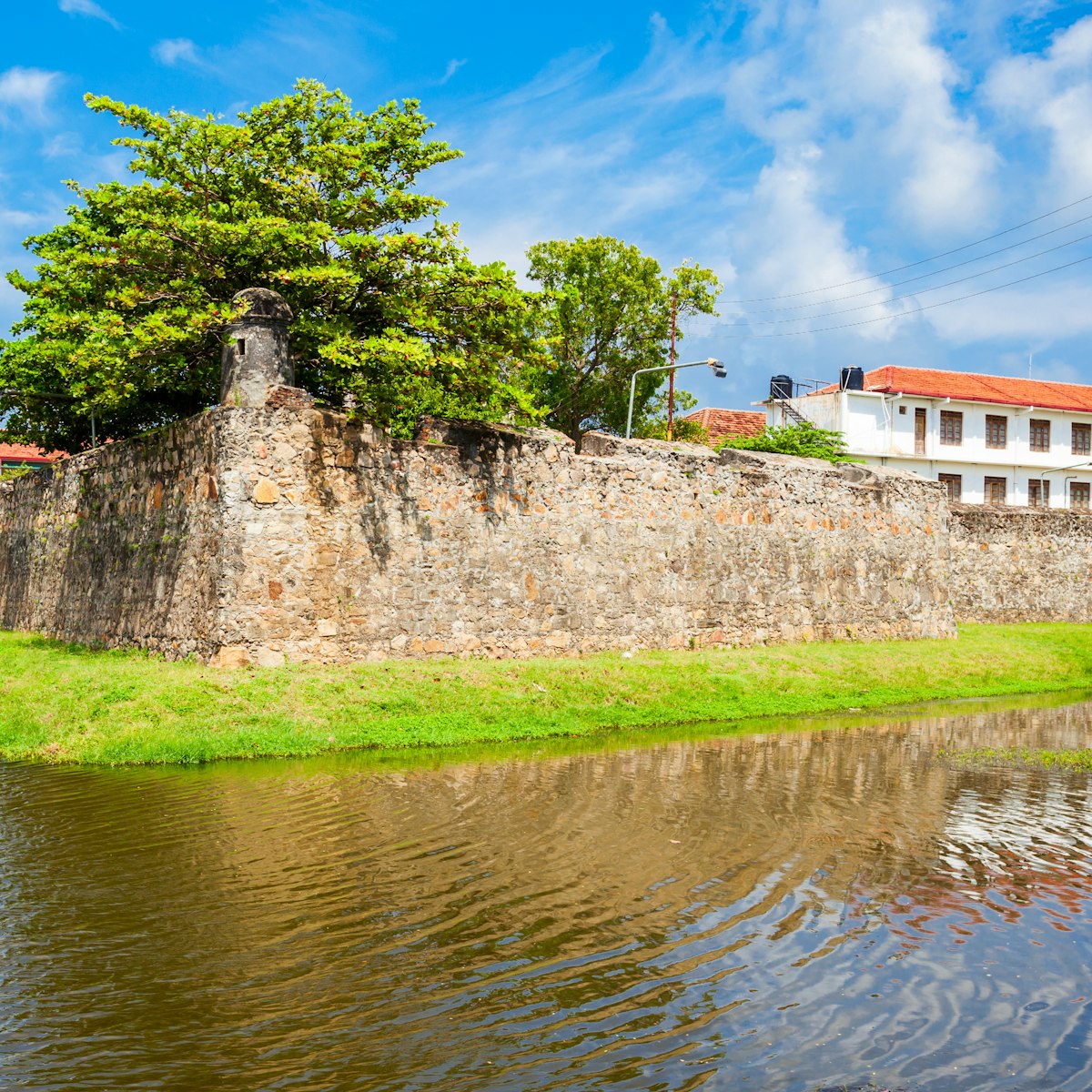
With rugged mountains, untouched beaches and fertile soil that grows coconuts, tea and spices, Sri Lanka offers travelers a wondrous mix of experiences unmatched for an island of its size.
Today the country’s rich heritage, delectable cuisine and astonishing wildlife are more accessible than ever, thanks to an ever-improving public transport system. Trains, buses, coaches and tuk-tuks carry visitors to all parts of the island at various price points. But with so many charming places to choose from, where does one start?
Depending on what you’re looking for – art, culture, history – what you put down on your Sri Lanka itinerary is bound to change. Still, here’s our selection of the best places to visit in Sri Lanka to get you started.
1. Colombo
Best for exploring on foot
No Sri Lanka itinerary is complete without Colombo, the country’s culturally diverse hub. (But not its capital – that’s actually Sri Jayawardenepura-Kotte!) An ideal first taste of Sri Lanka, with tuk-tuks, cars and buses rushing through busy lanes, Colombo is renowned for its landmark buildings around the cosmopolitan Fort district, including the terracotta-roofed Dutch Hospital.
Be sure to spend some time at Galle Face Green, a seaside promenade where hundreds of families gather to dip their toes in the sea at sunset and children fly kites overhead. Order yourself isso wade, deep-fried prawn and lentil cakes, topped with spicy sambol, and people-watch.
Planning tip: While Colombo is a safe and walkable city, tuk-tuks are inexpensive and convenient for getting around. Always check that your tuk-tuk has a working meter before you get in to ensure you pay the correct fare for your ride.
2. Sigiriya
Best for history buffs and art aficionados
With ornate ponds, royal sleeping chambers and majestic lion paws carved into the base of the rock, the colossal granite fortress of Sigiriya is easily Sri Lanka’s most recognizable site, peeking out of a thick jungle canopy for a glimpse of the ancient kingdom of Kassapa.
Although its frescoes – images of bare-breasted women adorned in jewelry with flowers in their hair – are famous, the view from the top of the rock is unparalleled. A hush of calm echoes over the terraced summit, which covers 1.6 hectares (4 acres).
Planning tip: Get here around 7am – the cooler morning air makes for a pleasant walk up the 1200 steps to the top. Aim to head back down before noon (before the rock surface gets too hot), stay hydrated and wear soft shoes with tread.
3. Anuradhapura
Best for experiencing Buddhist culture
Anuradhapura looks misleadingly like any other Sri Lankan town when you arrive: an unremarkable clock tower, a single train station and small shops lining a busy main road. But the town's simple facade gives nothing away regarding the enormous scale of its heritage as the heartland of Sri Lankan Buddhist culture.
The main feature of this area remains the sacred Sri Maha Bodhi tree, believed to have been planted from a cutting from the tree Buddha attained enlightenment under in Bodhgaya, India. Beyond this, Anuradhapura is bursting with archaeological wonders: colossal dagobas (stupas), temples, palaces and venerable Buddhist sites scattered among the jungles and villages of the area.
Planning tip: Comfortable shoes are a must for walking between sites. Buddhist temples, even as ruins, are still places of worship, and footwear must be removed before entering. Carrying a scarf to cover legs and shoulders is always a good idea.
4. Polonnaruwa
Best for ancient archaeological wonders
Often twinned with a visit to Anuradhapura, Polonnaruwa is also famed for its ancient ruins, rock temples and Buddhist heritage.
As you gaze upon the 14m (46ft) reclining Buddha in Gal Viharaya and its surrounding carvings, you can’t help but imagine what went into creating these figures. The white, grey and black granite softens the details of these intricate carvings, and the scent of fresh flowers and incense, offered to the statues by devotees, floats through the temple's air.
Don’t skip the remaining archaeological sites in the area, including the Royal Ruins, which can be visited in a day and contain closely grouped temples and stupas.
Planning tip: If traveling toward Jaffna in the north of Sri Lanka, both Anuradhapura and Polonnaruwa are great places to stay and break up the journey.
5. Jaffna
Best for a taste of Tamil culture
From the Jaffna Fort to the architecturally marvelous Nallur Kandaswamy Kovil, a Hindu temple adorned with brasswork and staggering murals, Jaffna is a relaxed change from the rest of the country. Here you can immerse yourself in the culture and heritage of Sri Lanka’s largest ethnic minority: the Tamil people.
Once under Portuguese and Dutch occupation, today’s Jaffna is revitalized with up-and-coming restaurants. Of the several islands off the coast of Jaffna accessible by roads and ferries, Kayts – a hauntingly beautiful, quiet island of fishing communities – and Delft, with its wild ponies descended from horses abandoned by Dutch colonists, are worth a visit.
Planning tip: The Tamil-centric culture in Jaffna differs from the rest of the island. Be mindful of local customs, such as removing footwear when entering certain sites. This includes the Jaffna Public Library, where footwear is removed as a means of respecting the knowledge within the building.
6. Trincomalee
Best for an unspoiled beach vacation
Stretches of powdery soft beaches and calm waters meld with dramatic cliffside Hindu temples – among them the famous Kandasamy Kovil, with unmistakable ornamental architecture and a monumental statue of Shiva looking out to sea – for a touch of Sri Lanka that remains off most tourists’ radars.
The coastline here is only disturbed by the occasional bit of driftwood or coconut husk washing ashore in the shallow waters, ripe for snorkeling, where miles of coral reefs and marine life thrive.
Planning tip: Public beaches here do not have lifeguards, and swimming and snorkeling should only be undertaken with a guide.
7. Dambulla
Best for pilgrim trails
An important part of the country’s pilgrim trail, set within a quiet jungle that's home to the native toque macaque (aka toque monkey), Rangiri Cave Temple in Dambulla is the most visited place in Sri Lanka.
Expect troops of monkeys to accompany you on the walk up to the temple, inside which you'll find a series of five caves containing 150 well-preserved statues of Buddha alongside religious art, sculpted and painted into the rock.
Planning tip: Wear white or soft colors as a mark of respect, and expect crowds on full-moon days, which are holy days in the Buddhist calendar. While toque macaques are delightful to watch, they are wild and should never be approached.
8. Minneriya National Park
Best for witnessing the largest gathering of Asian elephants in the world
Herds of wild elephants – around 300 in number – graze nearly 9000 hectares (22,240 acres) of Minneriya National Park, where life centers around Minneriya Lake. Watch in awe (cameras at the ready, naturally!) as long trunks draw water and calves roll around on the banks in wet mud.
Once a year, during the dry season, all 300 elephants gather around the banks of the lake to graze in a marvelous natural event known as "the Gathering." This also happens to be the largest gathering of Asian elephants in the world.
Planning tip: April to October is the best time to see the Gathering. Prebooking your safari and sharing jeeps helps to reduce the number of vehicles entering the park during this busy period.
9. Kandy
Best for experiencing Sri Lanka’s Hill Country
An ideal day trip from Colombo, the train departs the city’s Fort Railway Station and pulls into the heritage town of Kandy in under four hours. As the train curves and winds around mountains to connect rural towns, wide windows frame the view of deep ravines and hillsides densely covered in emerald-green tea bushes.
The Temple of the Sacred Tooth Relic and Kandy Lake, both must-do attractions for anyone visiting Sri Lanka, are easily reached via tuk-tuk from the station.
Planning tip: Visitors are required to cover their arms, legs and shoulders when visiting the Temple of the Sacred Tooth Relic. The Kandy-to-Colombo train is an alternative way to experience Sri Lanka’s railway journeys, as popular towns such as Ella are 10 hours away from Colombo.
10. Kalpitiya
Best for surfing enthusiasts
Despite attracting thrill-seekers from around the world, Kalpitiya retains most of its quaint coastal charm, with the exception of a Dutch-era fort that is occupied by the Sri Lankan navy. Cows, goats and donkeys stroll across the villages. Thatched-roof beach huts with outdoor showers offer that stereotypically pleasing surf-shack vibe, and most mornings you’ll wake to a crowing rooster. Most important, just 30km (19 miles) north of here at Vella Island, a narrow sandbar, you’re surrounded by tall, clear waves – kitesurfing heaven.
Planning tip: The weather for kitesurfing is ideal between October to May, and there are several kitesurfing schools around Kalpitiya.
11. Kumana National Park
Best for spotting birds
Known for its 200-hectare (494-acre) bird reserve, Kumana National Park is a birder’s dream, home to throngs of vibrant kingfishers and jungle fowl alongside 255 recorded species of endemic and migrating birds, all of which find sanctuary in the park's mangrove swamps and lagoons.
Expect to spot falcons and eagles as they soar above or peacocks shimmying on the ground. Also frequently spotted here: cleverly camouflaged crocodiles lying in wait on the sandy banks of the lake for a chance encounter with buffalo.
Cap off your trip here with a visit to the coastal village of Panama, which many visitors bypass in favor of bigger towns, such as Pottuvil and Arugam Bay. Between the tiny monastery under a rock, thatched-roof homes and dirt tracks through paddy fields, Panama is one of the most remote places to see.
Planning tip: Entrance to Kumana National Park is through the village of Okanda. Prearranging a guided jeep safari is best for enjoying the park.
12. Adam’s Peak
Best for experiencing a night hike
Adam’s Peak (the footprint of Prophet Adam, in Islam), Sri Pada (the sacred foot of Buddha) and Samanala Kanda (the mountain of the butterflies and a reference to the local deity Saman) are multiple names given to Sri Lanka’s holiest peak, considered sacred by all religions on the island.
Join thousands of pilgrims, dressed in white, in the early hours of the morning to hike slowly and quietly to the little temple at the top. Humble teahouses, resting places and shrines dot the landscape as you ascend. Pilgrims greet each other through blessings for a good climb. The hike to the top takes three to four hours, depending on the trail you choose. Aim to summit at dawn to catch the first rays of the sun wrapping around the mountain.
Planning tip: Adam’s Peak is 2243m (7359ft) high and a moderate climb. Ascending via Hatton and descending via Ratnapura is the shortest route, although steeper.
The full-moon days in December and May mark the beginning and end of the climbing season. During this period, set off earlier to sidestep the crowds, or expect slow and packed trails. Climbing in the offseason is not recommended, as it coincides with the southeastern monsoon.
 Publish for free
Publish for free

 zzdtravel
zzdtravel





















